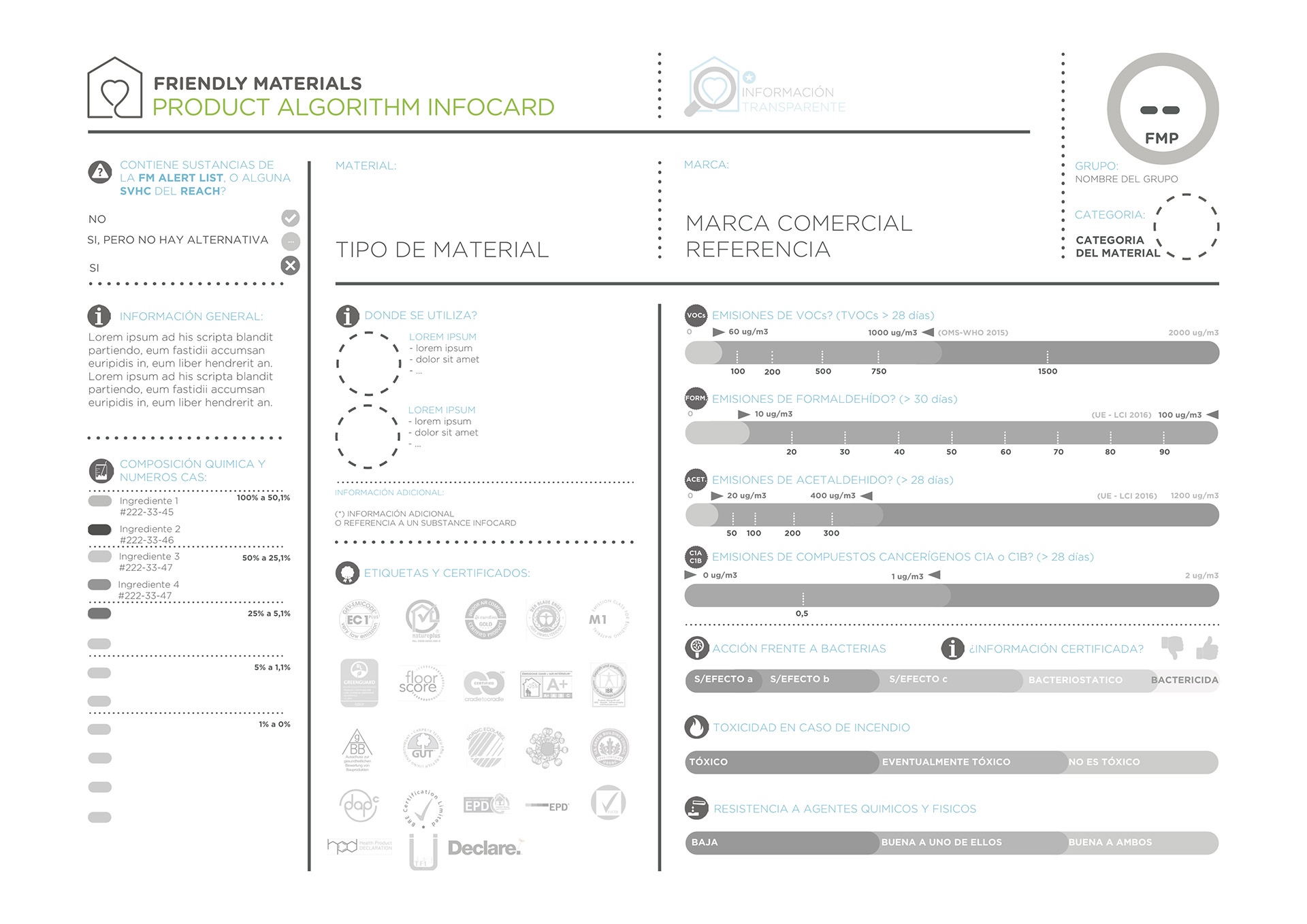The rating assigned to each building material is based on an own algorithm that combines in 8 groups the factors that affect human health.
The necessary data for the analysis of the construction materials are supplied by the manufacturers on their websites, technical data and certificates issued by third parties.

Does the product have any substances from the FM© Alert List or any substance identified as SVHC by the REACH program?
The following responses are admitted:
- Yes, it does contain a substance identified on the FM© Alert List or in the Annex XVII to REACH (the substance or substances shall be identified).
- No, it does not contain any substance identified on both lists.
- Yes, but there is no available alternative. The product contains an identified substance, but until the present day there is no suitable alternative to the use of such chemical.
Product’s chemical composition, including all the intentionally added ingredients and known residual substances up to 100ppm. Each ingredient shall be identified by its common name and CAS registry number. As for the % of each ingredient we do not request an exhaustive description. We must only be able to ?t the ingredients into the following ranges: [≤ 1%] [1,1 to 5%] [5,1 to 25%] [25,1 to 50%] [50,1 to 100%]
The following labels and certificates are accepted:
- ISO 16000. Quality certificates and regulations. International document on indoor air quality in which are considered several aspects: VOC emissions, formaldehyde emissions, carbonilic and carcinogenic compounds.
- ISO 14024. Eco-labels Type I Such labels establish requirements for several product categories (paints, insulation, furniture...). They ensure the user that, from an environmental point of view, a product is preferable than another from the same category. Certificates issued by third-parties.
- ISO 14025. Environmental product declarations Type III Quantitative information on the several environmental impacts that the product may generate along its life cycle. Certificates issued by third-parties.
Emissions of volatile organic compounds
The volatile organic compounds, also known as VOCs are a group of chemical substances that easily transform into gases or fumes.
We will consider the total emissions of organic volatile compounds (TVOCs) and also the emissions of some special VOCs that are frequently found in indoor environments:
- Emissions of TCOVs, after 28 days (ug/m3)
- Emissions of formaldehyde, after 30 days (ug/m3
- Emissions of acetaldehyde, after 28 days (ug/m3)
- Emissions of compounds classified as C1A or C1B, after 28 days (ug/m3) For paints, replace the last three lines for:
- VOC content (g/l) - Emissions of formaldehyde, after 30 days (ug/m3)
- Free formaldehyde content, after 24h of the first application (g/l or ppm)
Does the product have any kind of antibacterial activity? If so, you shall specify which type of action (when preventing the growth of bacteria and mold it is classified as bacteriostatic, and when eliminating the bacteria it is classified as bactericide) and present the supporting documents.
In case of negative answer, you may add any information that you find relevant (f.e very easy to clean with neutral products, prevents the growth of mold and bacteria, etc).
The decomposition products that may occur in case of fire shall be described (f.e may release carbon dioxide and carbon monoxide).
How does the material react in case of physical or chemical aggressions?
Whenever the assessed company provides all the information needed to fill in all the infocard fields, a “transparent information” stamp will be given and the correspondent points will be added.
